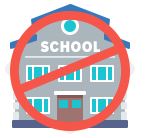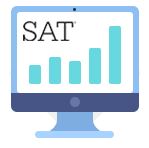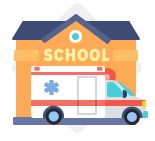
Teachers are arguably one of the most important roles in a child's life, shouldn't their salary reflect that? With an ongoing debate about the need to increase teachers' salaries- data shows there’s a very high correlation between teacher salaries and graduation rates.
Analysis performed by Learner with data from the last 10 years shows positive correlation between teacher salaries and graduation rates across the US..
| Year | Graduation Rate* | Average Salary |
| 2010-2011 | 79.00% | $56,069.00 |
| 2011-2012 | 80.00% | $55,418.00 |
| 2012-2013 | 81.00% | $56,383.00 |
| 2013-2014 | 82.00% | $56,610.00 |
| 2014-2015 | 83.00% | $57,379.00 |
| 2015-2016 | 84.00% | $58,353.00 |
| 2016-2017 | 85.00% | $58,950.00 |
| 2017-2018 | 85.00% | $60,477.00 |
| 2018-2019 | 86.00% | $61,730.00 |
| 2019-2020 | 87.00% | $64,133.00 |
Source: National Center for Education Statistics
As shown in the chart above, there is an 8 percent difference in the graduation rate between the highest to lowest teacher salaries. With a little over an $8,000 dollar pay difference between the two spots- it can average that each $1,000 dollars equals a percentage point. This theory also found that higher teacher salaries correlate with an increase of graduation rates for 46 out of the 50 states.
Teacher Salaries / Teacher Shortage
While education is very important in the US, there has been a significant teacher shortage occurring. The U.S. is facing a significant teacher shortage crisis, with an average of three unfilled teaching positions per school, leaving over 200,000 classrooms without qualified educators. This shortage has been accelerating since the pandemic and is present now due to economic challenges. It has even led to 55% of educators contemplating an earlier exit from the profession.
Main Take Away
Children in the US attend school from Kindergarten to 12th grade. Besides some school exceptions in various states, this duration leads to at least 10 years of their life. With an average of six to seven hours a day, children spend the majority of their most developmental time at school. With teachers having such importance in children's lives and upbringings, the need for teachers to feel confident in their position is critical. This crisis highlights the need for systemic solutions to address teacher retention and recruitment, ensuring a high-quality education for students.
If giving more money to teachers can ensure more children graduating- why is this debate still present?
New Report Shows Florida Has the 9th Best School System in America
The Florida school system have been in the news a lot lately. Even though much that is said is negative, it turns out, our schools actually grade fairly well. When you look past the headlines and dig into the data, it seems things aren't bad at all. In fact, this new report from Wallethub shows that Florida has the 9th best school system in America.
In order to determine the best school systems in America, WalletHub compared the 50 states and the District of Columbia across 32 key measures of quality and safety. The data set ranges from pupil-teacher ratio and dropout rate to median standardized-test scores. We'll break down fully where the numbers come from in a bit, but here's the snapshot.
Quality & Safety of Schools in Florida (1=Best; 25=Avg.):
All very respectable numbers. Also, as you plan for Back To School, keep in mind that this is the Tax Free Week for school supplies in Florida. Prices have gone up on everything, so save where you can.
Now, unlike other research that focuses primarily on academic outcomes or school finance, WalletHub’s analysis takes a more comprehensive approach. It accounts for performance, funding, safety, class size and instructor credentials. To determine the top-performing school systems in America, WalletHub compared the 50 states and the District of Columbia across 32 key metrics.
Main Findings
Public School Ranking by State
Note: With the exception of “Total Score,” all of the columns in the table above depict the relative rank of that state, where a rank of 1 represents the best conditions for that metric category. To see all 51, see the full report here.
Dropout Rate
- 1. West Virginia
- 2. Iowa
- 3. Kentucky
- 4. New Jersey
- 5. Indiana

- 47. Oklahoma
- T-48. Alaska
- T-48. Arizona
- T-48. New Mexico
- T-48. District of Columbia
Math Test Scores
- 1. Massachusetts
- 2. Wyoming
- 3. Utah
- 4. Nebraska
- 5. Wisconsin

- 47. Oklahoma
- 48. Delaware
- 49. West Virginia
- 50. District of Columbia
- 51. New Mexico
Reading Test Scores
- 1. Massachusetts
- 2. New Jersey
- 3. Utah
- T-4. Colorado
- T-4. New Hampshire

- 47. Oklahoma
- 48. Alaska
- 49. District of Columbia
- 50. West Virginia
- 51. New Mexico
Median SAT Score
- 1. Wisconsin
- T-2. Kansas
- T-2. Utah
- T-2. Wyoming
- T-5. Minnesota
- T-5. Nebraska

- T-46. Delaware
- T-46. New Mexico
- T-46. Rhode Island
- 49. Oklahoma
- T-50. District of Columbia
- T-50. West Virginia
Median ACT Score
- 1. District of Columbia
- T-2. California
- T-2. Connecticut
- T-2. Massachusetts
- 5. New Hampshire

- T-44. Alabama
- T-44. Arizona
- T-44. Louisiana
- T-44. Mississippi
- T-44. North Carolina
- T-44. Oklahoma
- T-44. Tennessee
- 51. Nevada
Pupil-Teacher Ratio
- 1. Vermont
- 2. Maine
- 3. District of Columbia
- 4. New Hampshire
- 5. New Jersey

- 47. Alabama
- 48. Nevada
- 49. California
- 50. Arizona
- 51. Utah
% of Threatened/Injured High School Students
- 1. Delaware
- 2. California
- 3. North Carolina
- 4. Maine
- 5. Massachusetts

- T-40. Idaho
- T-40. Texas
- 42. Kansas
- 43. Alabama
- 44. Mississippi
- 45. Louisiana
Bullying Incidence Rate
- 1. District of Columbia
- 2. Delaware
- 3. Hawaii
- 4. Rhode Island
- 5. Virginia

- 44. Iowa
- 45. Wyoming
- 46. New Hampshire
- 47. West Virginia
- 48. Alaska
Methodology
In order to determine the best and worst states for public-school education, WalletHub compared the 50 states and the District of Columbia across two key dimensions, “Quality” and “Safety.”
We evaluated those dimensions using 32 relevant metrics, which are listed below with their corresponding weights. Each metric was graded on a 100-point scale, with a score of 100 representing the highest quality of public K–12 education.
Finally, we determined each state and the District’s weighted average across all metrics to calculate its overall score and used the resulting scores to rank-order our sample.
Quality – Total Points: 80
Safety – Total Points: 20
Sources: Data used to create this ranking were collected from the U.S. Census Bureau, U.S. Department of Education, National Conference of State Legislatures, National Center for Education Statistics, Centers for Disease Control and Prevention, Western Interstate Commission for Higher Education, Office of Juvenile Justice and Delinquency Prevention, Child and Adolescent Health Measurement Initiative, Education Commission of the States, U.S. News & World Report, College Board, Ballotpedia, ACT, State Educational Technology Directors Association, Civil Rights Data Collection and Zendrive.





